Many shooters my age (and we won’t go into that number) started shooting sports with a BB gun.
In my case, it was a hand-me-down Daisy BB gun. I still keep a couple of air rifles in my gun safe.
They are some of the best training tools for young and inexperienced shooters I have found.
Many people wonder about the differences between air rifles, pellet guns and BB guns.
Typically, pellet guns and BB guns fire either .177 or .22 caliber projectiles. Air rifles can be purchased that fire a projectile in various calibers from .177 to .50 caliber.
The projectiles may be round pellets or conical or bullet-shaped projectiles. Springs, compressed gas cylinders, or an integral air pump are the usual power sources for these guns.
Understanding the differences in each style of non-ballistic rifle gives you some insight when deciding on a purchase.
Under no circumstances should any type of air rifle, pellet gun, or BB gun be considered a toy.
The same rules, precautions, and training should be observed when using these non-ballistic rifles as you would use with a standard ballistic rifle.
BB Guns
BB Guns date back hundreds of years.
The first recorded BB gun was manufactured and sold by the Markham Air Rifle Company in Plymouth, Michigan.
The Markham company produces a spring-piston design rifle that uses BB-sized shot normally used in smooth barreled shotguns.
Two years later, another Plymouth company, which would later be renamed Daisy, introduced an all-metal air gun that also fired a BB-sized shot.
These small, lightweight, and relatively inexpensive air rifles became popular. Over the intervening years, thousands of different models by hundreds of different manufacturers have been sold.
A growing number of shooters collect vintage BB guns, and you can often find them traded and sold at flea markets, junk sales, and antique stores.
How Does a BB Gun Work?
The most common internal mechanism used in BB guns is the spring-piston system.
The underlying principle is the same now as it was 150 years ago.
- When the BB gun is cocked using either a lever-action or pump-action mechanism, a piston is forced back against a spring.
- The spring is compressed behind the piston. The spring and piston are held in place by the trigger sear.
- When the trigger is pulled, the spring and piston are released.
- The spring forces the piston forward, compressing air behind the BB in the rifle barrel, propelling it forward.
While this mechanism is effective, it is inefficient and delivers very low velocities from the rifle barrel.
Most BB’s are copper-clad steel and cannot easily swage to fit the barrel.
BB’s are made slightly smaller than the internal barrel diameter. This allows some of the compressed air to escape around the BB.
In addition, many youth-style BB guns are manufactured with weak springs to allow easier cocking for younger children. This further limits the velocity of the BB. Coupled with the round character of the BB and a lack of spin, BB guns tend to be inaccurate.
Most BB guns available today produce velocities in the range of 275 to 475 feet per second.
Other Means of Propulsion
More expensive and powerful BB guns are available.
Most of these styles of BB guns depend on a multiple pump system or a compressed gas cartridge to propel the BB from the rifle. A few of this style of BB guns may even have rifled barrels for better accuracy.
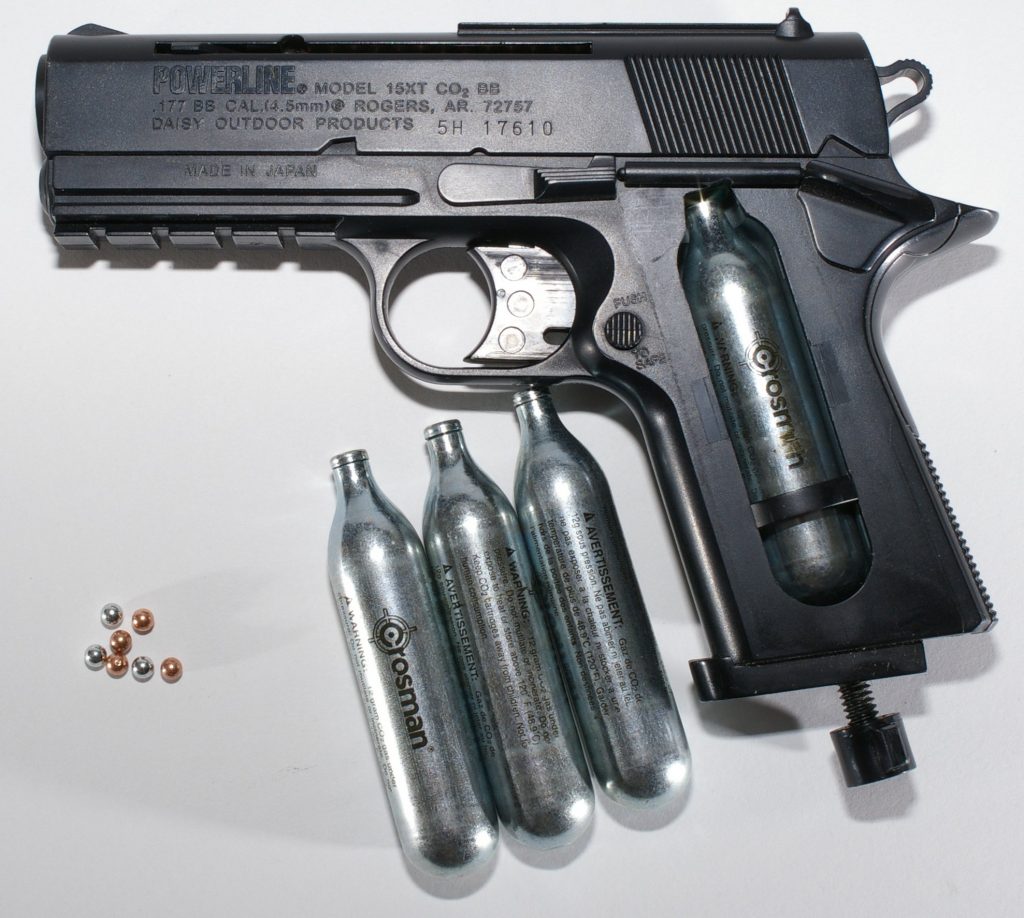
Rifled barreled BB guns typically require pure lead shot instead of the usual copper-clad steel BB.
Most multiple-pump air rifles use a piston to pump air into a holding chamber. The more times the action is operated, the higher the pressure in the chamber.
Many multi-pump rifles can use traditional BB.s or bullet-shaped pellets. In general, because of the higher pressures than a traditional BB Gun.
A more modern alternative is the use of metal gas cylinders that hold compressed gas.
When inserted into the BB gun, these cylinders seal against a valve.
A measured amount of compressed gas is released into the chamber to propel the BB or pellet when the trigger is pulled.
These gas cartridge BB guns can produce higher velocities than most other BB gun actions.
Styles and Types of BB Guns
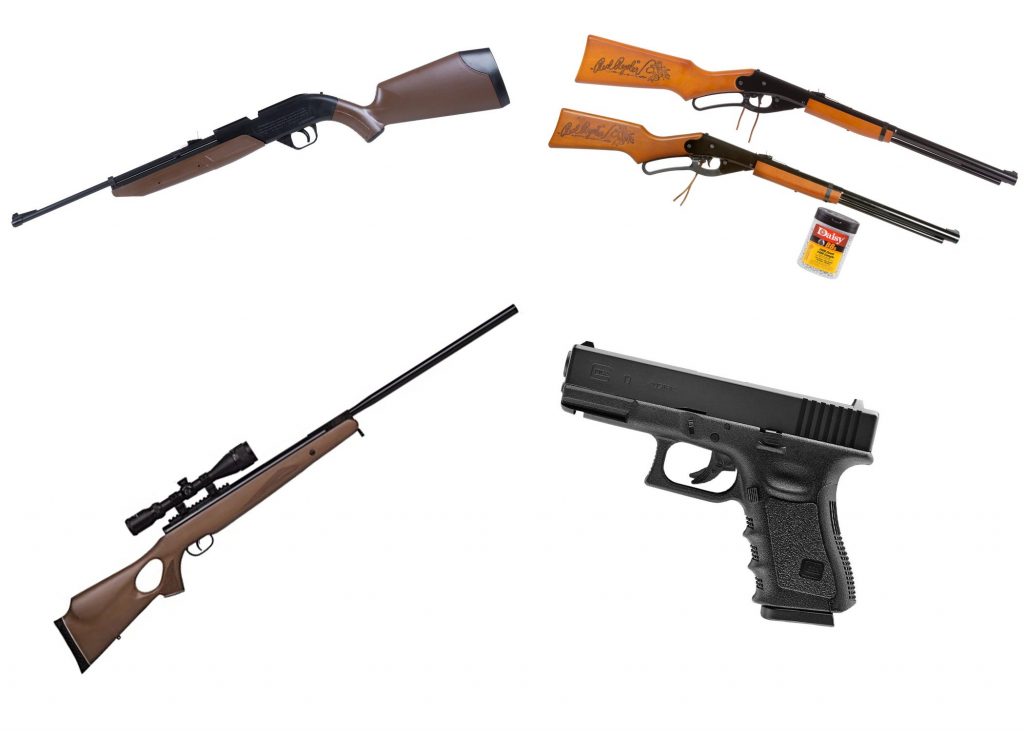
Traditionally, BB guns were offered in two types, lever-action, or pump-action.
Surprisingly, the pump-action was the most popular style of BB gun for almost 50 years. However, the lever-action BB gun remains the best seller today across the market.
New designs employing new materials have revolutionized the BB gun markets.
Some BB guns are available that use much larger refillable gas tanks. New designs allow semi-automatic fire and fully automatic fire from a strictly gas-powered BB gun.
BB guns are also available in many pistol styles.
The most popular style of BB pistol is those modeled after the Browning 1911.
Most BB pistols rely on a CO2 Gas Cartridge to eliminate the need to pump the pistol between shots.
Pellet Guns
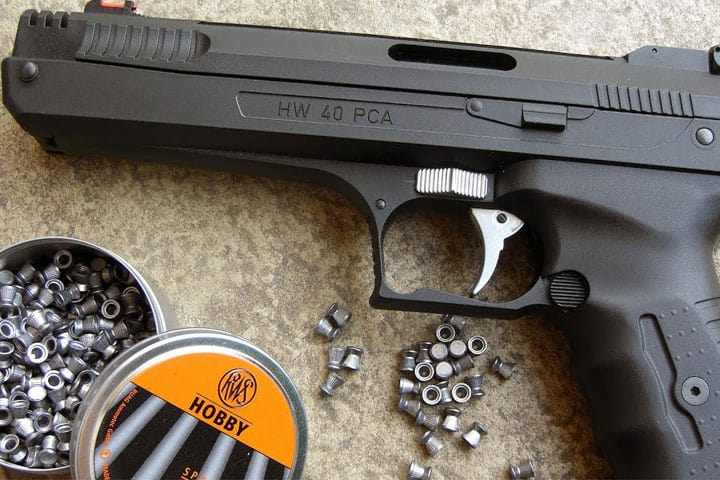
Pellet guns are the first cousins of BB guns.
Many of the same principles found in BB guns are found in Pellet Guns.
The major difference between these two types of air guns is the size and shape of the projectile fired from the gun. BB guns, by and large, fire a .177 caliber round copper-clad steel ball.
Pellet guns, on the other hand, typically fire a .22 caliber bullet-shaped lead projectile.
The same sorts of propulsion systems used in BB guns are found in pellet guns.
However, these systems’ strength and power in pellet guns typically deliver higher muzzle velocities than a BB gun.
Some pellet guns can deliver 1,000 feet per second at the muzzle of the rifle.
The Advantage is in The Projectile
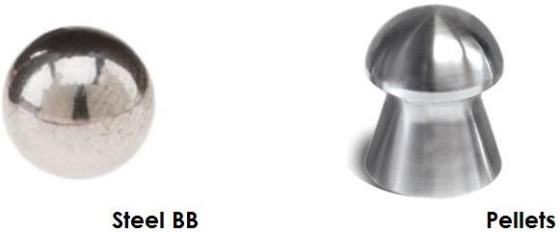
Put a BB on the table next to a .22 caliber pellet rifle projectile, and the differences are immediately clear.
BB’s are round steel balls usually clad with copper to prevent rust on the steel core. Round projectiles are inherently unstable in flight giving poor accuracy.
Compound this characteristic with the lack of rifling and the poor fit of the BB inside a regular BB gun barrel, and both velocity and accuracy suffer further.
Pellets for pellet guns are an entirely different animal.
First, pellets tend to be made of lead which is malleable and can swage tightly to a pellet rifle barrel.
This allows rifling in the barrel to impart spin to the conical or bullet-shaped pellet. This has several effects on the projectile as it is forced down the barrel of the rifle.
- The rear skirt of the lead pellet expands slightly under pressure to create a tight seal with the barrel. More of the compressed gas energy is imparted to the pellet, meaning more velocity at the muzzle.
- The lead pellet conforms to the lands and grooves in the rifled barrel. This imparts spin to the lead pellet, making the pellet more stable in flight than a round projectile
- .22 caliber lead pellets have more mass than a .177 caliber steel BB. The more efficient use of the gas and the spin on these heavier projectiles increases accuracy and makes the pellets less subject to crosswinds.
More expensive pellet guns deliver enough power to enable hunting small games like rabbits and squirrels and birds. (Read: Best Pellet Guns: Hunting Squirrels & Small Game)
At the top end of the pellet gun market are air rifles in much larger calibers suitable for many larger games species, including deer.
The Propulsion System – Putting the Pellet Down the Barrel
In general, pellet gun propulsion systems are like BB gun propulsion systems.
Pellet guns depend on several different means of generating the gas pressures to send the pellet down the barrel.
- The cheaper pellet guns use the same spring-piston system as BB guns to deliver compressed air to the pellet. In general, the spring and piston are operated in various ways, including:
- Break barrel designs with a hinge under the barrel allow the action to break so a new pellet can be installed and simultaneously compresses the spring and piston.
- Lever-Action systems compress the spring and piston by operating a lever. Some may automatically put a new pellet in the chamber. Others require the chamber to be opened and a pellet manually inserted.
- Pump-Action pellet guns are somewhat rare but may still be found. Pulling the foregrip backward operated the lever-action that compresses the spring and piston.
- Many pellet guns use the same CO2 metallic cartridge used by BB guns. The small metallic tank is inserted into the pellet rifle. The compressed CO2 gas is released in measured amounts when the trigger is pulled. Some pellet guns also use the compressed CO2 for cycling the pellet rifle and inserting a new pellet into the chamber with each shot.
- External compressed air tanks with higher-end pellet guns give the shooter the convenience of many more shots without pumping or installing a new CO2 cartridge. The downside of these systems is the bulk and weight of the tank and the inconvenience of hoses and transportation.
Air Guns – Aren’t BB Guns and Pellet Guns Air Guns?
In general, BB guns and pellet guns fall under the more generic term of air rifle.
However, some rifles used compressed gas as a propellant that doesn’t fit the definition of either a BB gun or a pellet gun.
Typically, the pressures in the propellant system and the size of the projectile determine the difference.
Air rifles can be traced back to about 1850. Inventors were experimenting with air guns in calibers from .30 to .51 calibers.
While BB guns and pellet rifles are considered more recreational than functional, the goal of air rifle inventors typically involved hunting or military uses.
These historical air rifles were meant to compete directly with rifles using gunpowder as a propellant.
Size is the Difference
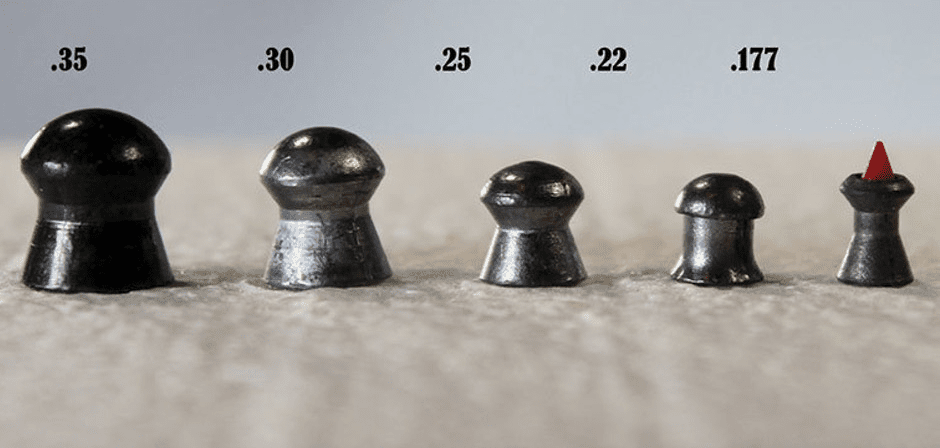
Technically, air rifles can shoot the same projectiles as BB guns and pellet guns. However, in the world of air gun shooting, you can find air rifles that shoot projectiles up to .50 caliber.
The power behind these larger caliber air rifles enables hunting big game.
In some instances, air rifle shooters have taken deer, elk, and feral pigs with large caliber air rifles.
Developing the Power to Be Effective
It takes power to drive a .50 caliber projectile down a rifle barrel with enough energy to be useful.
Getting the distance and the delivered energy on impact is the key to using an air rifle for hunting.
New technologies and developments have spurred the air rifle forward into a viable hunting and target shooting environment.
There are Olympic venues for both air rifles and air pistols at the international level.
These competitions require a level of accuracy and reliability that rivals any traditional gunpowder-powered firearm.
Most of the air guns in these categories depend on gas propellant systems much more sophisticated and powerful than the standard spring-piston designs.
Powering a Large Caliber Air Rifle
Typically, large caliber air rifles capable of taking bigger game animals or for competitive target shooting depend on one of these types of systems.
- Gas Spring Systems – Gas spring systems, sometimes referred to as gas piston, gas strut, or nitro piston systems, store the mechanical energy used to propel the projectile as compressed gas rather than spring energy. These systems eliminate the mechanical spring and rely on directly compressing gas as the pump is operated.
- Single-Stroke and Multi-Stroke Pneumatic Systems – Some air rifles use a single-stroke pump to compress the gas in the system. This is efficient, but the effort needed to operate the pump becomes overwhelming when higher pressures are involved. Some air rifles use a multi-stroke pump to lessen the effort to achieve the necessary pressures to combat this problem.
- Pre-Charged Pneumatic Systems – Many higher caliber air rifles depend on pre-charged tanks or cylinders to provide the necessary energy to propel bigger projectiles. These pre-charged gas tanks range from small CO2-filled cartridges to larger pressure tanks that attach to the rifle externally. These pre-charged systems can deliver extremely high muzzle velocities and propel the largest calibers but come with the disadvantages of more equipment, more weight, and few options to refill the gas cylinder in the field.
The popularity of air rifles surged in the 1990s and has since leveled off. There are several manufacturers of larger caliber air rifles both in the US and abroad.
However, the cost to manufacture these precision air rifles makes them expensive, keeping the market relatively small.
Which is the Best Choice – Air Rifle, Pellet Gun or BB Gun?
As with any shooting sport, the expectations of your air rifle drive the type and style of gun you should buy.
In general, you should consider these criteria:
- For recreational or training with children or inexperienced adults, A BB gun or pellet gun may be good. The relatively low muzzle velocity and the small caliber make these air guns suitable for small spaces. In some instances, an indoor range can be implemented using BB guns or pellet guns.
- More expensive pellet rifles may be suitable for pest control or small animals. Many farmers and gardeners use pellet rifles to control rodents such as mice and rats.
- Suppose you are interested in competitive target shooting with air guns. In that case, you will want to consider a higher-end pellet rifle designed for this type of sport shooting. The more competitive you get, the more you will need a true air rifle over a pellet gun.
- The challenge of hunting a larger game with a rifle driven purely by compressed gas is attractive to many hunters. If you want to get into the air rifle hunting action, you will need to shop for a true air rifle designed for these uses and, in a caliber, suitable for your target game.
Air Rifle, Pellet, and BB Guns – Closely Related but Distinctly Different
The lines between air rifles, pellet guns and BB guns are not distinct.
There is a lot of overlap among these types of riles.
Finding the right type of air rifle, pellet gun, or BB gun for your needs often means considering different options such as cost, your expectations, and the uses of the air gun.
Last but not least, remember that these are not toys. Even the cheapest and least powerful air gun has the capability of doing damage and inflicting injury.
Treat them as you would any other firearm at all times.
Over and Out.

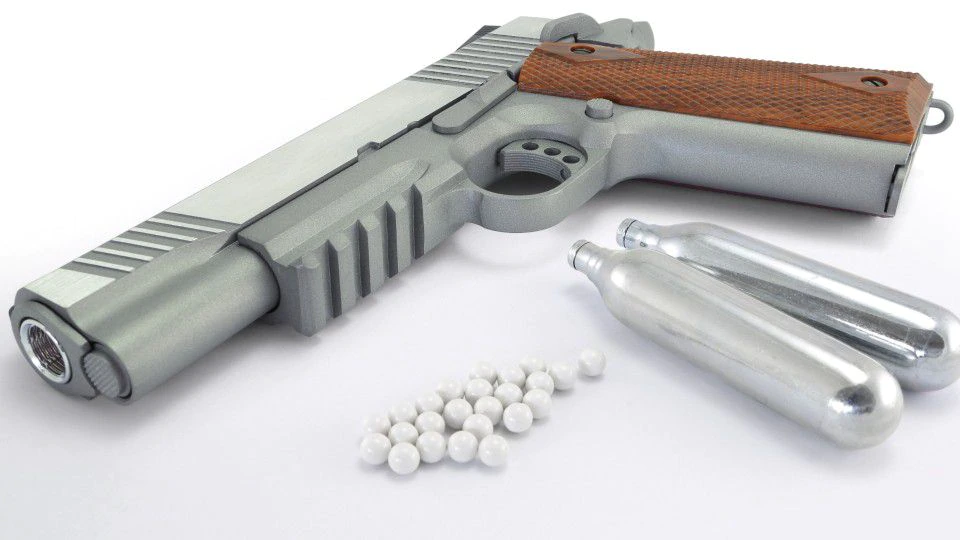
I want to discourage a very mean stray cat that is harassing my animals from coming around. I do not want to kill it but frighten/hurt it enough that it will not come back. What would you suggest I use: a BB gun or pellet gun and what caliber?